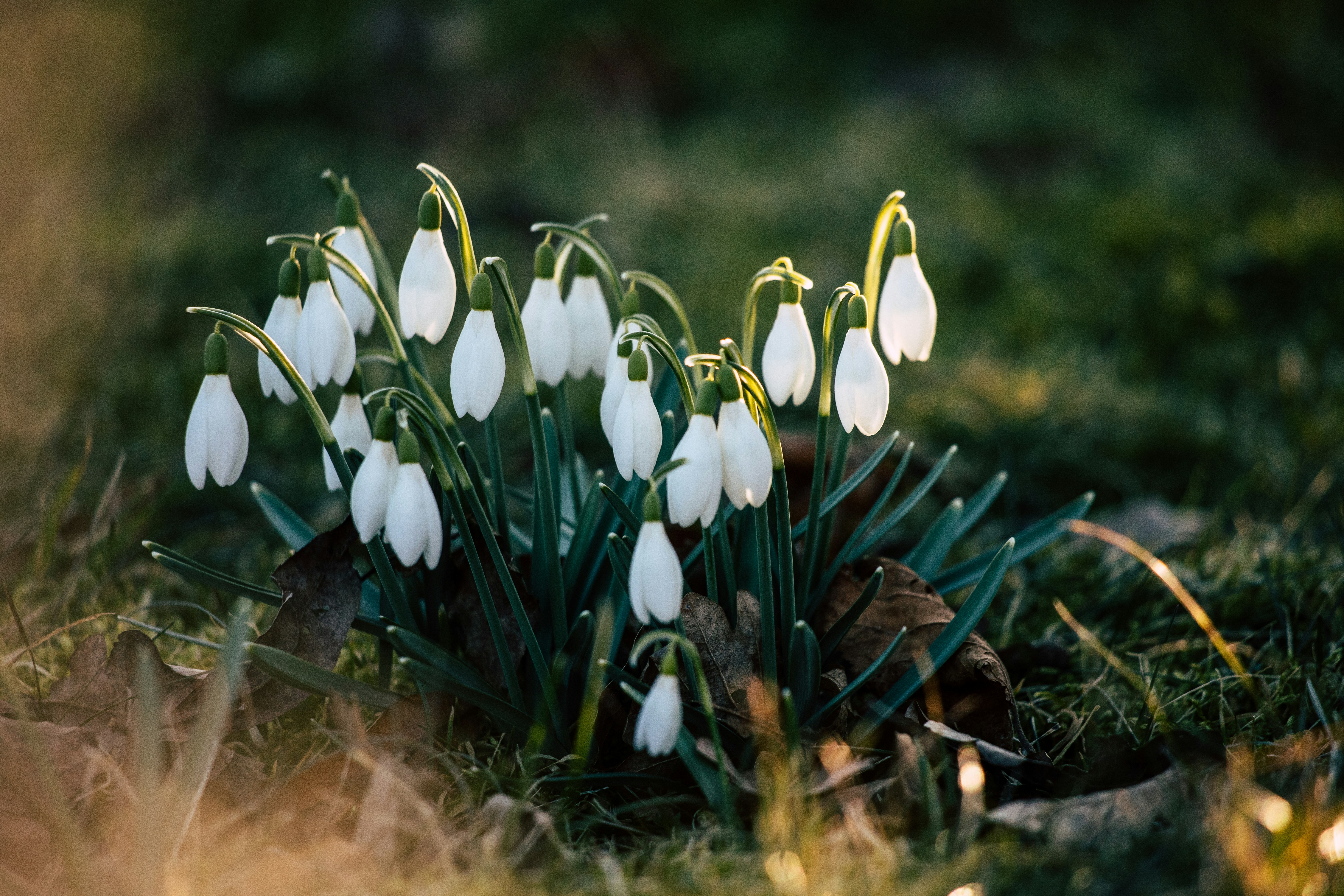Gardening Jobs for February

As the colder weather starts to disappear and with the lighter days not too far away, life in the garden starts up again. The first peeks of snowdrops come into bloom and buds on trees will start to appear.
There are plenty of jobs to do inside the house before Spring arrives but things to do in the garden this February are still few and far between, however, there is pruning and planting to be done before Spring is here.
Snowdrops in bloom
If you planted your snowdrop bulbs back in October, you’ll finally see them come to life this month. Snowdrops don’t require much maintenance once established so you can enjoy the beautiful blanket of white flowers in February. Come March when the foliage has started to die back, divide established clumps every few years.
To propagate snowdrops, after flowering, in March/April, carefully lift the bulb with a hand fork, keeping the roots intact. Replant immediately. By next winter, you’ll have a flourishing plant once again.
What to prune in February
Wisteria needs regular pruning to keep its size under control, but to also improve its beautiful flower display. Wisteria pruning is required twice a year, in February and July/August time.
In February when the plant is dormant, cut back the shoots to tidy up the plant before the growing season begins. This will ensure the flowers won’t be hidden by leaves. The ARS Professional Bypass Secateurs are perfect for pruning wisteria.
Trees and Shrubs
February is the time to plant hedges, shrubs, trees, and climbers but it’s time to prune them too.
The goal of pruning is to remove overcrowding and dead, damaged, or dying branches. Pruning will promote new growth, allowing a better display of flowers or production of fruit in the growing season. For thicker branches, a pruning saw such as the ARS Professional Straight Blade Pruning Saw is perfect, and for smaller branches a pair of sharp secateurs like the ARS Professional Bypass Secateurs are great.
When pruning, it’s also a good opportunity to check your plants for disease or pests.
Rose pruning
It’s still a good time to prune roses. Don’t forget to use sharp, clean tools when pruning as this will give your plant the best chance to heal whilst not spreading diseases from plant to plant. See our full rose pruning guide on our blog, with expert comment from David Austin Roses.
Growing your own – preparation starts now
Prepare for the new planting season by weeding your veg beds and covering them in a thick layer of garden compost.
Chit early potato tubers. To do this, place potato seeds in a tray or egg box. Stand in a cool, light, frost-free spot until shoots about 1-2cm have formed. This could take up to 6 weeks.
Plant Rhubarb into enriched soil or lift and divide mature clumps.
General Garden Maintenance
Some general garden maintenance and odd jobs to be done may include:
Feeding your plants by spreading mulch or manure around roses and shrubs. Improve the soil by spreading garden compost over beds and forking it.
Clearing out your pond by removing old leaves and other plant debris that may have fallen into the water.
Clean, service and sharpen mowers, garden power tools and manual gardening tools. This is to make sure they are in good working condition when you come to use them in Spring. We have a guide on maintaining your garden tools here.
Winter Wildlife Gardening
When you’re doing jobs around the garden this winter, you’ll get to see common winter garden birds such as sparrows, robins, bluetits, starlings and many more. Encourage them into the garden by hanging fat ball feeders. Hanging them near rose bushes will help to keep pests away as bluetits make a meal out of the pests.
February is also the time you could install a nest box. Surveying the birds you have in your garden will be a good guide as to which nestbox will be most suitable. An ideal position is in a sheltered north or north-easterly position to stop the box from overheating in the warmer weather. Open-fronted nestboxes should be tucked away in vegetation so they’re not obvious to predatory birds such as magpies. Make sure when you’ve decided where to hang your nest box to use the Henchman Fully Adjustable Tripod Ladder to ensure you can work hands-free and safely at height.
You can read more about wildlife-friendly gardening in our guide.
These are just some of the jobs you can do in the garden this February. Check out our Pinterest board for more gardening tips and share yours with us on our socials.



